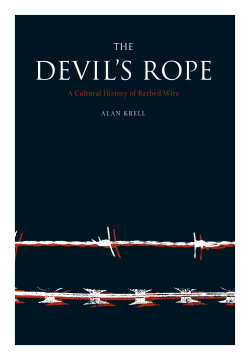
Additional Information
Book Details
Abstract
Barbed wire cuts across more than just property, war and politics. This most vicious tool of control has played a critical role in the modern experience, be it territorial expansion or the settlement of local and international conflicts. However, it has other histories: those constructed through image and text in the arts, media and popular culture. These representations – in painting, photography, poetry, personal memoirs, cartoons, novels, advertisements and film – have never before been critically examined. In this book, Alan Krell investigates the place barbed wire holds in the social imagination.
Invented in France in 1860, barbed wire was developed independently in the USA, where it was used to control livestock on the Great Plains, both to "keep out" and "keep in". Promoted as the Ideal Fence, barbed wire’s menacing qualities were soon made manifest. The epithet, "The Devil’s Rope", anticipated its transformation into a tool of war in the late 19th and early 20th century. Henceforth, it would become synonymous with repression. Barbed wire’s conflicting character makes it an appropriate symbol of modernity, and Krell shows how the use of this symbolism in contemporary art has given barbed wire meanings beyond the historical and political realms.
‘Richly illustrated . . . His prose purrs like a Formula One engine and the enthusiasm evident on every page almost tempted me to take out a subscription to The Barbed Wire Times. Yes, such publications do exist’
–Times Higher Education
‘fascinating insights into a simple invention that has carved up the modern world in the most complex of ways.’ –The Irish Times
‘fascinating’ –The Historian
Alan Krell is Lecturer in Art History & Theory at the University of New South Wales in Sydney, Australia. He is the author of Manet and the Painters of Contemporary Life (1996).
